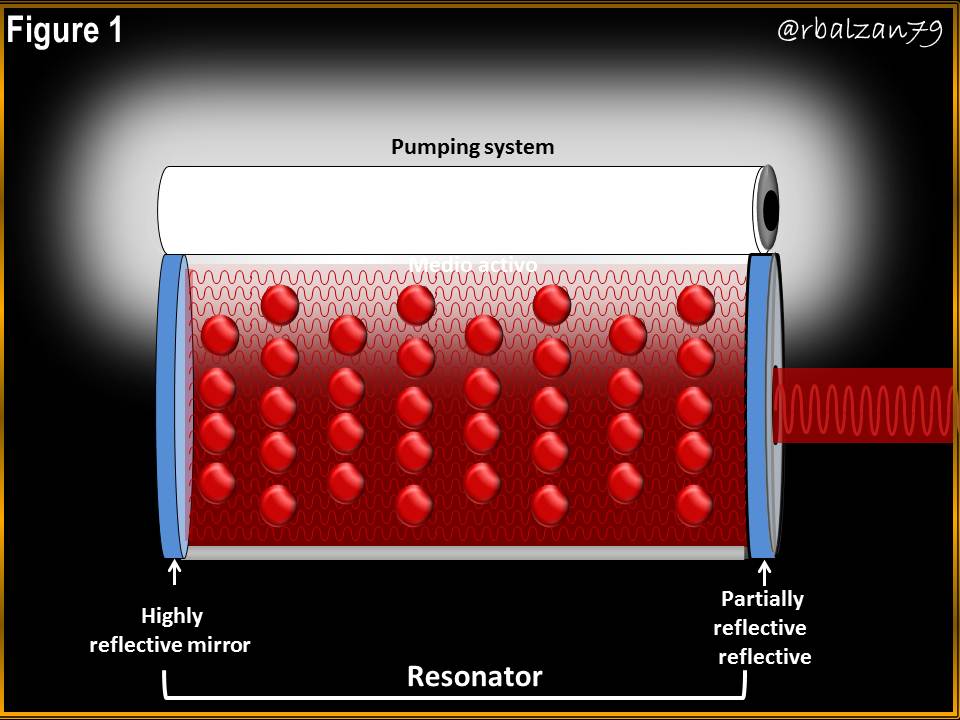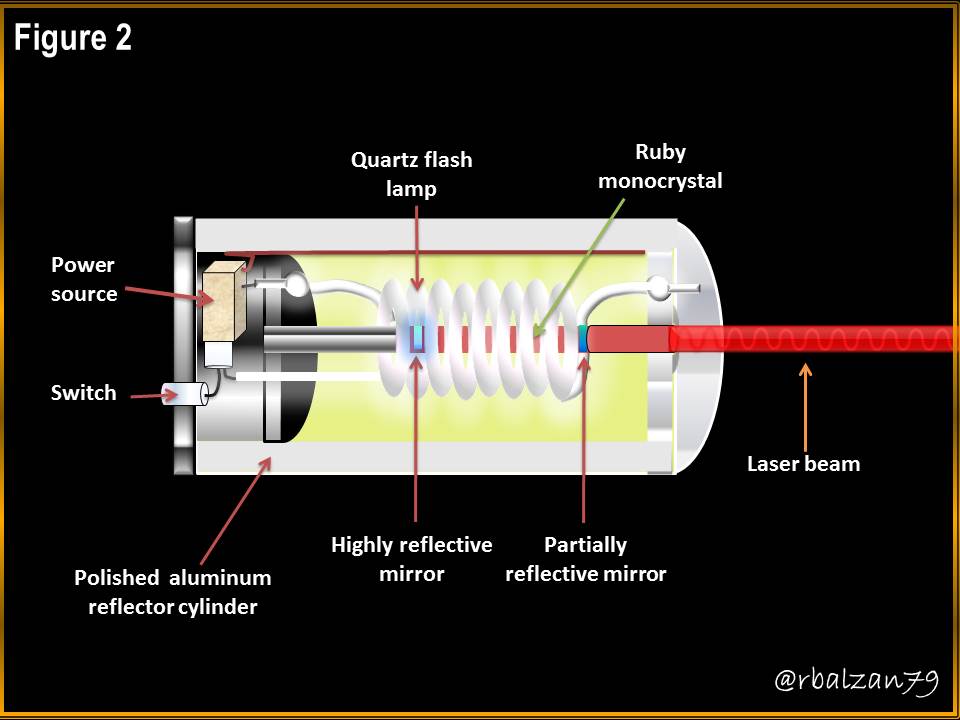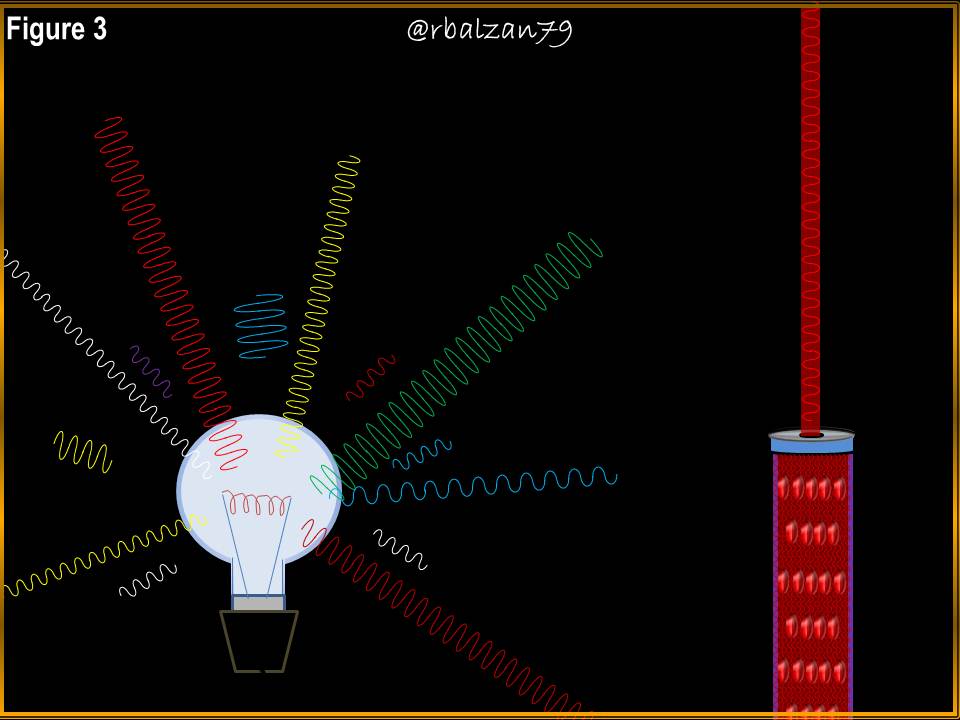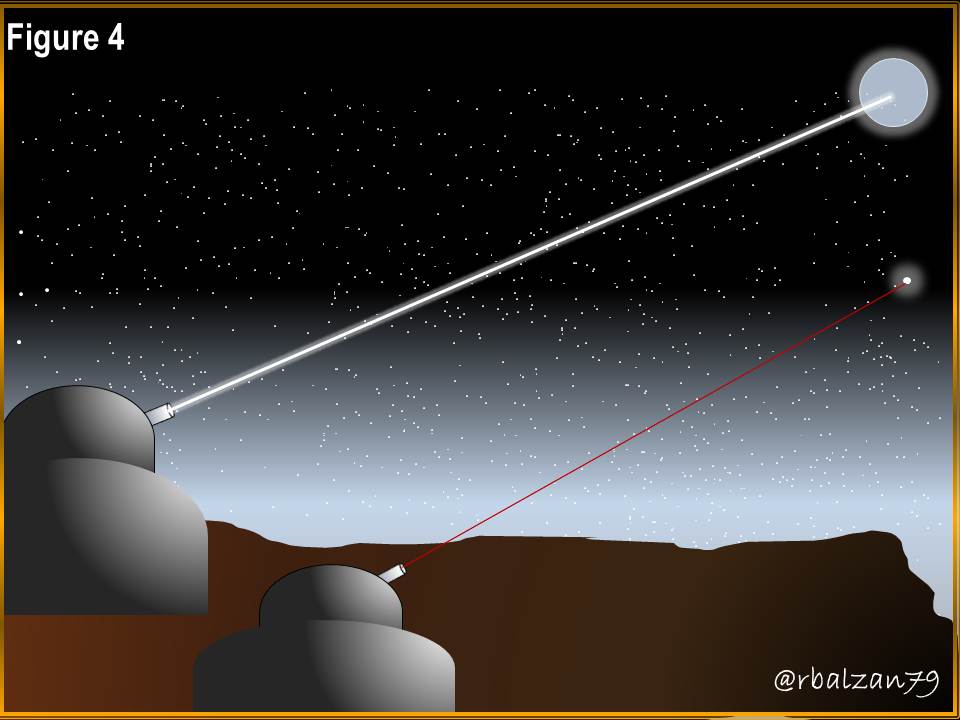Laser beam
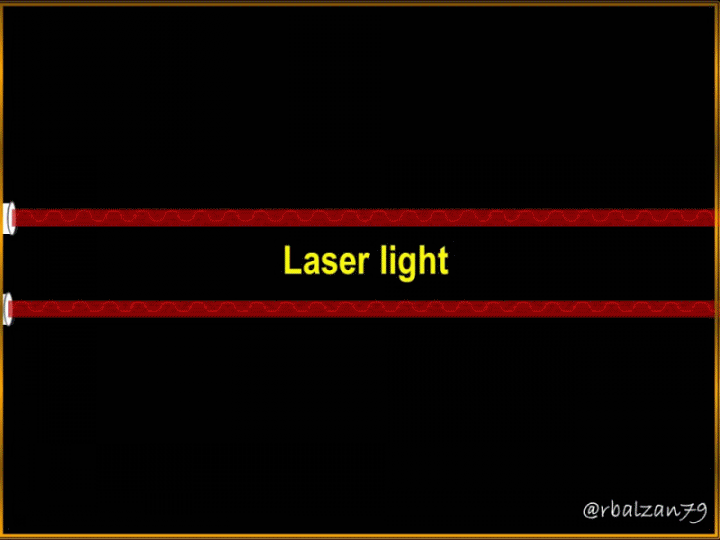
Introduction
When we look around us we can be reliable witnesses of the large number of activities carried out by man through various electronic devices designed by our intellectual capacity, we have been able to carry out the above mentioned with the implementation of all those learning from our natural environment that science offers us, and also with the essential help of the field of technology.
So far we have been able to demonstrate that the radiations of both electromagnetic and corpuscular origin have represented a valuable set of knowledge, and thus of application to any design or devices generated by the technological world, highlighting the fact that the vast majority of these radiations is impossible to perceive with our visual sense, but nevertheless, we have had the ability to implement them in many of these new electronic devices.
My reader friends let us remember that a radiation will always be a form of energy which propagates or radiates from one space-time to another, and as you know we have known them of electromagnetic or corpuscular nature, and both types are generally differentiated by presence or not of amount of mass, for example, the first (electromagnetic) do not have any mass when transported from one space to another, but, the opposite happens with the other radiations, that is, the corpuscular which do have a certain amount of mass when propagating.
In relation to the previous characteristic, the radiations studied so far have been classified as electromagnetic or corpuscular, however, it is also necessary to emphasize that there is a family of radiations composed of these two types of radiations, and this particular family is known as ionizing radiations, where we find X-rays, gamma rays, alpha rays, beta rays and cosmic rays, and as you can see, the first two are electromagnetic in nature and the last three are corpuscular, as you can see, the first two are electromagnetic in nature and the last three are corpuscular, each one with its particular capacity of penetrability when in contact with matter, which makes it more or less dangerous to our physical entity.
In our journey we have encountered many forms of manifestation of energy and this time we will analyze in general one of the most important and recognized beams in our time, that is, the laser beam, this type of beam man currently implements it in various activities such as entertainment, communication, medicine, among others, the truth my friends readers, is that the laser has become an indispensable and essential tool in our lives.
Therefore, we must point out that the laser beam originates or is generated from a device which implements an effect linked to the fruitful quantum mechanics, so that the stimulated emission gives rise to a certain coherent light beam through the implementation of a suitable medium, and whose size, shape and purity can be controlled, where it is important to note that the word Laser comes from the acronym; Light Amplification by Stimulated Emission of Radiation, ie, light amplification by stimulated emission of radiation.
We can express then that the laser is nothing more than a certain electronic device which manages to amplify a beam of light of impressive intensity, and this process is carried out by the excitation of a standing wave located between two simple and well known optical systems such as mirrors, these mirrors, One is of translucent characteristic and the other is opaque, and very important all this in a homogeneous medium, this wonderful process leads to a light wave that moves from one side to the other because it is reflected in the mirrors mentioned, and then out through a portion of the translucent mirror as you can see in the following figure 1.
Figure 1. Formation of the laser and its component elements
Therefore, this type of light beam (Laser) is an electromagnetic radiation as observed in the previous figure 1, and where, the injection of external energy excites the atoms thus taking them to a higher energy level, the received light wave generates other waves when it hits the rest of the atoms of the active material which generates the light, thus amplifying the light waves which are bouncing back and forth between the mirrors, and thus obtaining coherent light which will come out with all that amount of energy through the hole of the translucent mirror.
Laser beam
When we refer to a laser beam, we refer to a highly concentrated energy propagation as you could see in Figure 1, and this laser beam is generated by a certain device that we generally call laser device, and as already stated, this process is achieved by the stimulated emission either in a gaseous medium, solid, semiconductor, liquid, among others, and this laser device could be very complex or very simple, everything depends on the utility you want to give for a particular activity.
It is important to note that the first ruby laser was designed or created by Ted Maiman, this surprised many scientists of the time because Ted was little recognized, this makes us highlight and know the components of this first ruby laser, as you can see in Figure 2 below.
Figure 2. Components of the first ruby laser
We know that in our journey we have had as a referential spectral fraction for all our analysis to the white or visible light to our natural optical systems (eyes), this leads us undoubtedly to relate this portion with the properties of a laser, where the radiation caused by this beam or laser beam is different from that caused by a particular source of natural or artificial light.
Therefore, it is important to relate the laser beam with our visible light, then we have that the difference between these two electromagnetic radiation is that the laser is a monodirectional beam, monochromatic and also coherent, unlike a beam of visible light generated by a particular source either natural or artificial, then you can visualize the properties described above in the following figure 3.
Figure 3. Laser directionality vs. light from a light bulb
In the previous figure 3, you could see how the emitter of artificial light, in this case the bulb, emits millions of waves, and the same could have equal or different directionality, this makes us express and affirm that the bulb of our example emits omnidirectional light, and the opposite happens with the laser which its wave emission is monodirectional as already expressed.
It is important to emphasize that the characteristic of monochromatism, as far as light is concerned, depends on the related wavelengths; Therefore, if all the emitted waves have the same frequency or length, the resulting light will have the same color, according to our example, we can say that the light emitted by the bulb has varied frequencies, this clearly depends on the type of filament implemented for the development of the same, however, the opposite happens in the generation of a laser, because its light source comes from either a gas or a highly purified solid, and consequently the waves produced will have equal energy charges and frequency, as observed in Figure 3.
Going deeper we must say that in the generation of artificial visible light generated by a source such as a light bulb, their respective resulting waves are not in phase, so this leads to a high fraction of its energy charge is lost, this causes some of these waves to cancel with others, while in a laser all the waves produced have equal phase, and this allows the energy originated is the maximum possible, and this is because none of the waves cancel each other, maintaining a sense of coherence in the propagation.
Now my friends readers it is important that we can know some of the applications of the laser, in relation to its high directionality capacity in straight line has allowed us to implement it as a guiding agent in long pipe laying, it is also used in computer printers due to its great capacity of precision and definition, another important application is found in astronomy in the study of our outer space, and with the laser have been able to measure with great precision the distance between our planet Earth and its natural satellite, the moon, and also to the stars, as you can see in the following figure 4.
Figure 4. Use of lasers in astronomy due to their directionality
Another very important application of the laser is found in medicine, and for this we must say that in 1961, is used for the first time the laser (originated by ruby) in a human being and this was to correct a retinal problem, the retina as we know represents our natural screen receiver of the carrier rays of each image observed in our environment.
Each one of us can point out a great number of applications of the laser since we can observe it in any place and moment of our existence, for example, many of us have been able to consult the value of a certain product in a supermarket through a laser device as we can see in the following figure 5.
Figure 5. Laser device in commercial establishments
When we move to our homes we can find the application of the laser, since many appliances or devices today use this electromagnetic beam, found in CD and DVD players, as we can see in the following figure 6.
Figure 6. Old electronic equipment implementing lasers
Conclusion
At every moment that we observe around us we are witnesses of any type of phenomenon, and one of them, without a doubt, is the development or propagation of any type of radiation, whether of electromagnetic or corpuscular nature, we must always emphasize the great importance of understanding our spectral fraction of white or visible light, since with it we have understood everything that surrounds us.
In this opportunity we continue deepening in the analysis of electromagnetic radiation and for this we find the laser beam, highlighting its essential characteristics such as monochromaticity, directionality and is also highly coherent, these properties allows it to be brighter than sunlight.
When we highlight the monochromaticity we are referring to those electromagnetic waves that although they act as a group or group do so with wavelength or frequency very close to each other, or at least close to these characteristics, since despite emitting very pure colors, it must be said that all waves emitted do not have exactly the same wavelength, but very close to each other.
Its outstanding characteristic of great directionality, has allowed the world of astronomy to use it to determine with great accuracy distances between various celestial bodies located in our outer space such as the moon, it has also been very useful in other vital areas such as medicine, communication, technology, among many others, And as has been highlighted with other radiation, the important thing is that the laser has been implemented in many of our daily activities, and as usual, highlighting the fact of care and danger at the time of originating a laser as this could burn our skin or if it is extra powerful could cause even greater damage.
With this article we relate to another type of ray belonging to the family of electromagnetic radiation, and the same that is located between the spectral fraction of non-ionizing rays, and generally, the laser is between the ultraviolet spectrum through our referential fraction, ie visible light, to reach the infrared spectrum.
Until another installment my dear readers of Hive.blog, especially to the members of the great community of #Stemsocial, which receives the support of another wonderful community as #curie, so I highly recommend to be part of this exemplary project, as they allow us to highlight the wonderful work of academia and the enormous work of the entire field of science.
Note: All my images were created using Paint and Power Point applications and the animated gif was created with the PhotoScape application. The photostatic images used in Figures 5 and 6 were captured by the optical instrument (camera) of the ZTE BLU Life Play 2 cell phone.
Bibliographic references consulted and recommended
[1]Introduction to Laser Physics
[2]Funcionamiento del rayo láser
